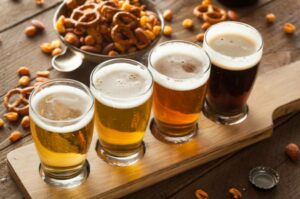
Beer is the third most consumed drink in the world after coffee and tea. With just that statistic, you know how important this nourishing and sometimes intoxicating beverage is.
Here are some more fun facts about beer gathered by the Faultline Brewing Company:
The earliest discovered beer was found in Israel and was aged at 15,000 years old!
Beer was a staple food before bread was invented. In medieval Europe, many monasteries became famous for their unique beers, which were brewed for the monks to get enough calories and nutrients during fasting days.
Ancient Egyptians brewed beer because the water from the Nile River was not potable.
Scientifically, the best way to drink a carbonated beer is in a can, since it’s a sealed environment from the sun and easily sanitized and safe from foreign contaminants. (Yeah, but we don’t like the taste of the can).
Consumed in moderation, beer is a nourishing drink that has both antioxidants and, thanks to the yeast used in brewing, probiotics which are proven to be good for gut health.
The brewer’s yeast that’s added to make beer consumes the sugars in the grains and, as the mix ferments, the yeast creates carbon dioxide bubbles and alcohol.
Different fermentation processes and temperatures create different types of beer. Beers that are brewed cold are best served cold, while beers that are fermented while warm are best served at room temperature.
In North America, most commercial beers are pasteurized. Pasteurization is a similar practice to sterilization. The beer is exposed to a short, very high-temperature blast of heat. That heat kills any live yeast and bacteria and extends the shelf-life of the beer. Pasteurization does not change the alcohol content of beer or its taste and mouth feel (i.e. those bubbles!).

Beer is typically made from just hops, barley and water, but can also be made with wheat, rice, and even quinoa and chestnuts. There are alcohol-free beers readily available now along with gluten-free beers. And as versatile as beer making is, so are the ways to use beer as an ingredient in your cooking. Watch this space over the next few weeks as I share fresh, new recipes that feature beer as an ingredient. Cheers!
Introducing ...Sunny Gold Sweet Mustard Pickles! Dismiss